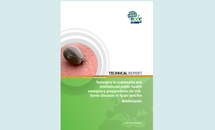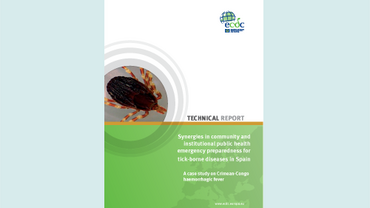Synergies in community and institutional public health emergency preparedness for tick-borne diseases in Spain and the Netherlands
This report is based on a case study project investigating the synergies between communities affected by serious public health threats and the institutions mandated to prepare for and respond to them. Two EU countries, Spain and the Netherlands, were selected for inclusion in the case study project. Emerging tick-borne diseases in humans have been reported in both countries in recent years, possibly due to environmental changes.
Executive Summary
Within the broad context of EU Decision 1082/2013/EU on serious cross-border threats to health, the European Centre for Disease Prevention and Control (ECDC) has initiated a case study project to investigate the synergies between communities affected by serious public health threats and the institutions (both health- and non-healthrelated) mandated to prepare for and respond to them. The premise for the project is that affected communities are increasingly recognised as key resources that can be used during public health emergencies, and that the concerns and experience of ordinary people should be harnessed as an important part of the response. The aim of this qualitative comparative case study project is to identify good practices related to community preparedness for tick-borne diseases.
Two EU countries, Spain and the Netherlands, were selected for inclusion. Work in Spain focused around two cases of autochthonous infection with Crimean-Congo haemorrhagic fever (CCHF) virus that emerged in the Autonomous Community of Castilla y León in August 2016. Work in the Netherlands focussed on the first two endemic cases of tick-borne encephalitis (TBE) in the country, appearing in July 2016 in the Utrecht and Twente regions.








